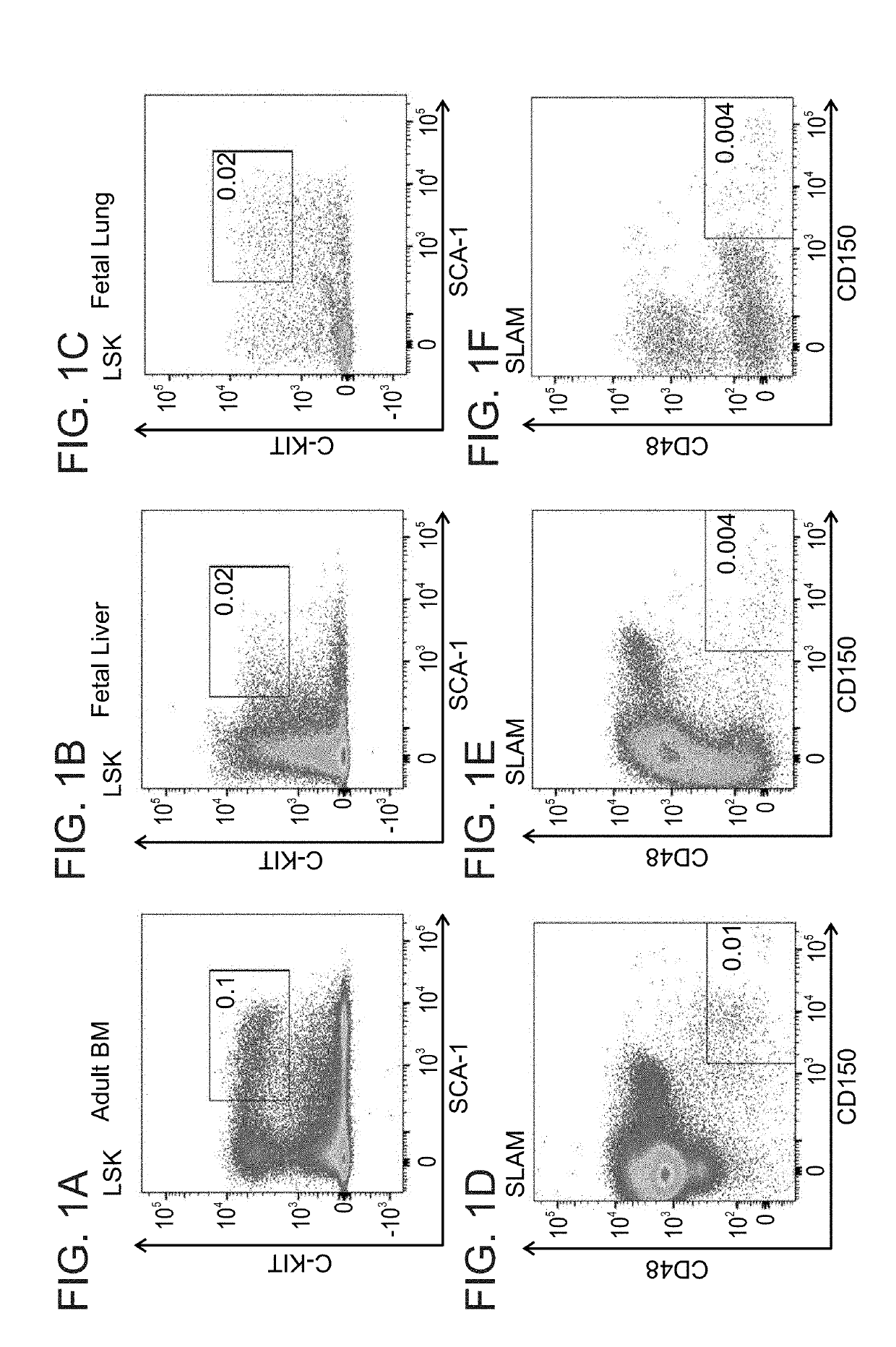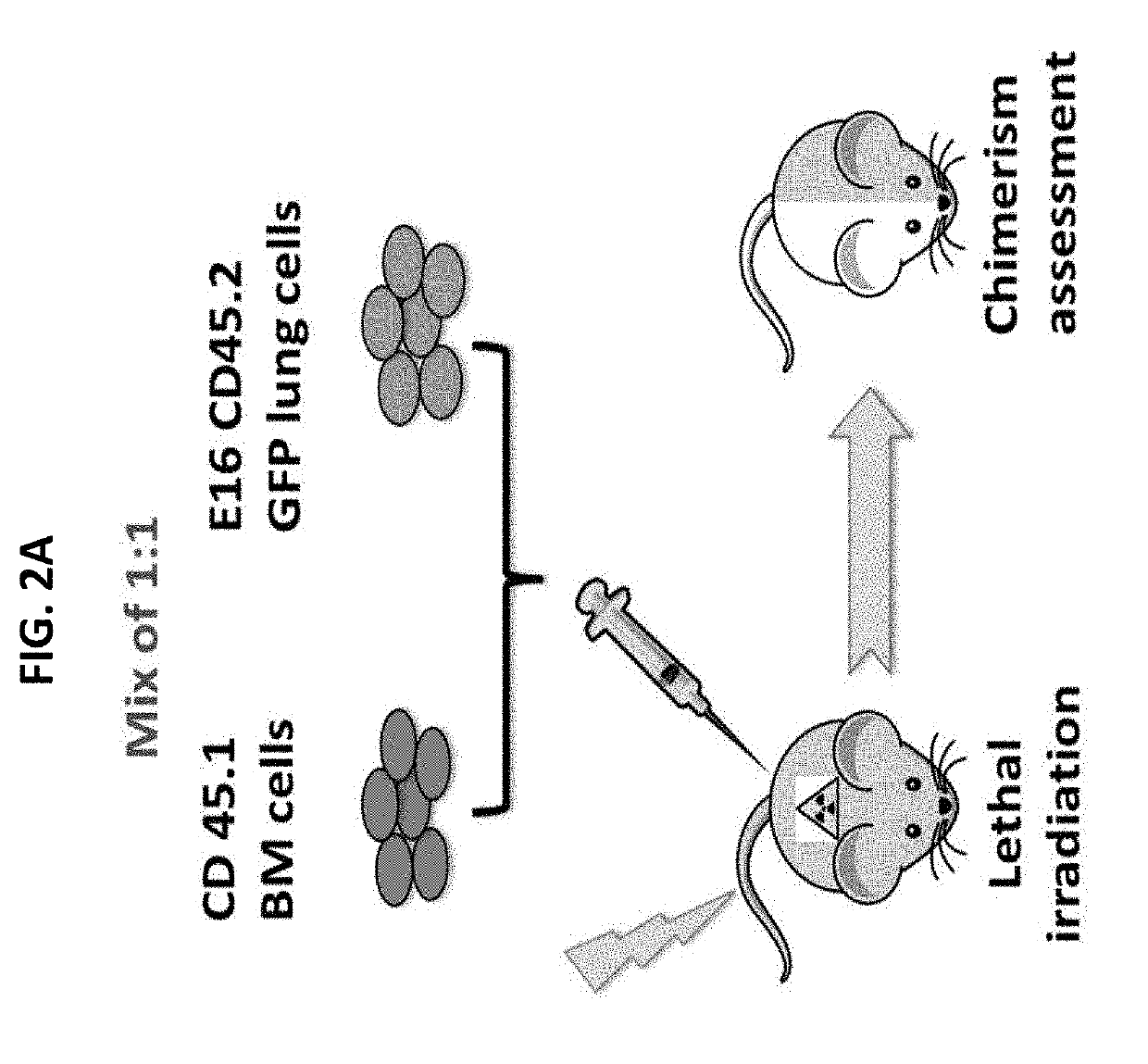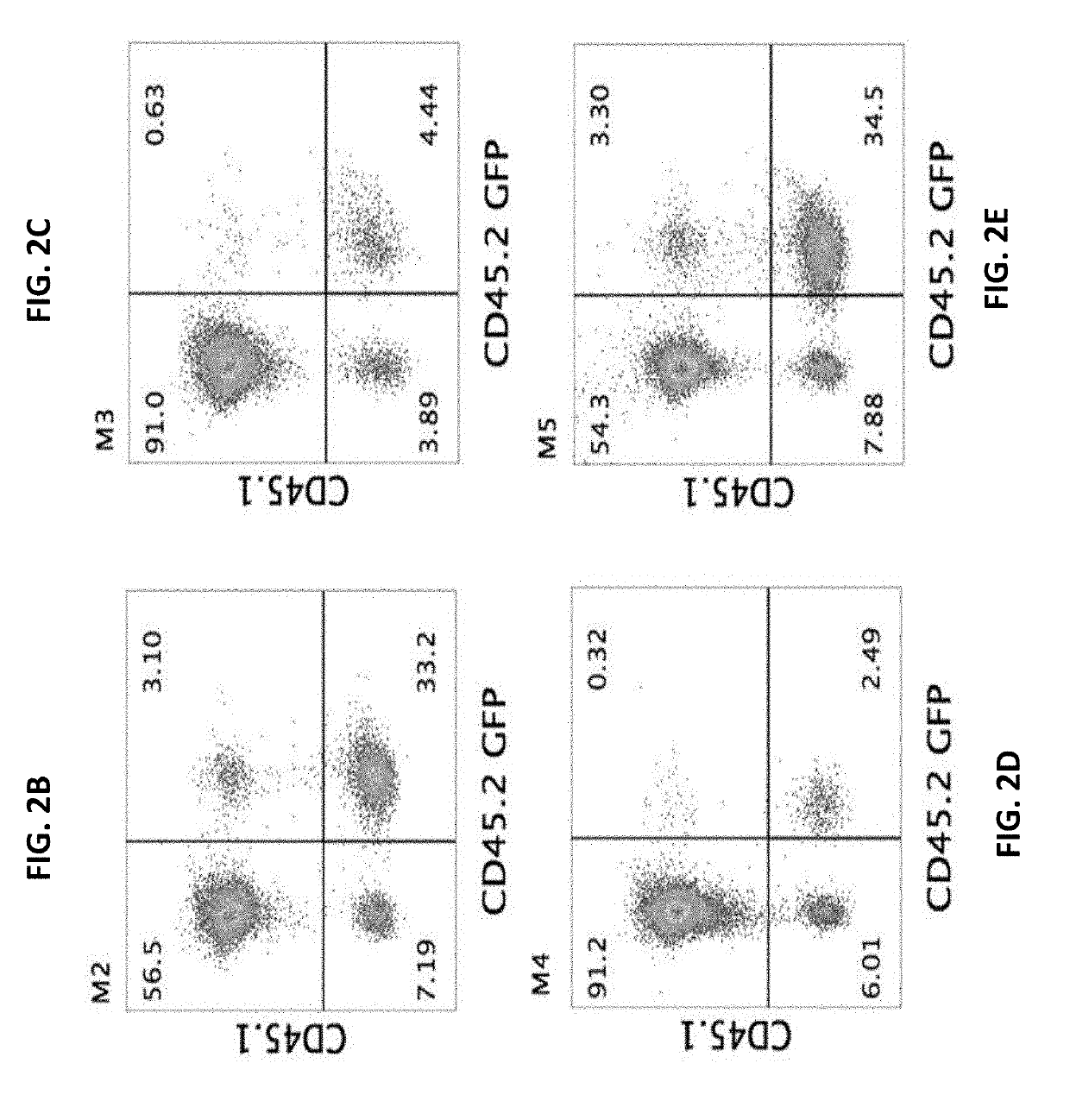Methods of using pulmonary cells for transplantation and induction of tolerance
a technology of pulmonary cell transplantation and induction of tolerance, which is applied in the direction of medical preparations, pharmaceutical delivery mechanisms, unknown materials, etc., can solve the problems of reducing the quality of life of lung disease patients, reducing the number of patients, and preventing the loss of gas exchange surfa
- Summary
- Abstract
- Description
- Claims
- Application Information
AI Technical Summary
Benefits of technology
Problems solved by technology
Method used
Image
Examples
examples
[0390]Reference is now made to the following examples, which together with the above descriptions, illustrate the invention in a non-limiting fashion.
[0391]Generally, the nomenclature used herein and the laboratory procedures utilized in the present invention include molecular, biochemical, microbiological and recombinant DNA techniques. Such techniques are thoroughly explained in the literature. See, for example, “Molecular Cloning: A laboratory Manual” Sambrook et al., (1989); “Current Protocols in Molecular Biology” Volumes I-III Ausubel, R. M., ed. (1994); Ausubel et al., “Current Protocols in Molecular Biology”, John Wiley and Sons, Baltimore, Md. (1989); Perbal, “A Practical Guide to Molecular Cloning”, John Wiley & Sons, New York (1988); Watson et al., “Recombinant DNA”, Scientific American Books, New York; Birren et al. (eds) “Genome Analysis: A Laboratory Manual Series”, Vols. 1-4, Cold Spring Harbor Laboratory Press, New York (1998); methodologies as set forth in U.S. Pat....
example i
The Fetal Lung as a Source for Hematopoietic Stem Cells for Induction of Transplantation Tolerance and Chimerism
[0440]Inventors of the present invention previously shown in a syngeneic mouse model that upon pre-conditioning with naphthalene and total body irradiation (TBI) intravenous infusion of a single cell suspension of canalicular lung cells induced marked long-term lung chimerism [Rosen, C. et al., Nat Med (2015) 21(8): p. 869-79]. Based on this proof of concept, the present inventors have attempted to attain a similar level of lung chimerism following transplantation of canalicular embryonic lung cells from fully mis-matched allogeneic donors. In general, acceptance of such transplants can be attained by using continuous immune suppression. However, considering the problematic side effects associated with chronic immune suppression, an alternative approach such as that based on induction of immune tolerance is more desirable. It is well established that immune tolerance can b...
example 2
Induction of Hematopoietic Chimerism after Transplantation of Fresh Adult Lung Cells
[0443]Adult lung cells were harvested from a GFP positive C57BL / 6 mouse and a single cell suspension comprising 8×106 was injected i.v. into C57BL / 6 recipient mice following conditioning with NA and 6 GY TBI.
[0444]Eight weeks after transplantation lung tissue from transplanted mice was obtained, fixed and analyzed for GFP positive patches. As evident from the results (FIGS. 6A-F) marked number of donor derived GFP positive patches were found in the recipient's lungs. Furthermore, blood analysis revealed induction of blood chimerism by infusion of adult lung cells similar to that obtained by E16 fetal lung cells (FIGS. 7A-J).
PUM
 Login to View More
Login to View More Abstract
Description
Claims
Application Information
 Login to View More
Login to View More - R&D
- Intellectual Property
- Life Sciences
- Materials
- Tech Scout
- Unparalleled Data Quality
- Higher Quality Content
- 60% Fewer Hallucinations
Browse by: Latest US Patents, China's latest patents, Technical Efficacy Thesaurus, Application Domain, Technology Topic, Popular Technical Reports.
© 2025 PatSnap. All rights reserved.Legal|Privacy policy|Modern Slavery Act Transparency Statement|Sitemap|About US| Contact US: help@patsnap.com



